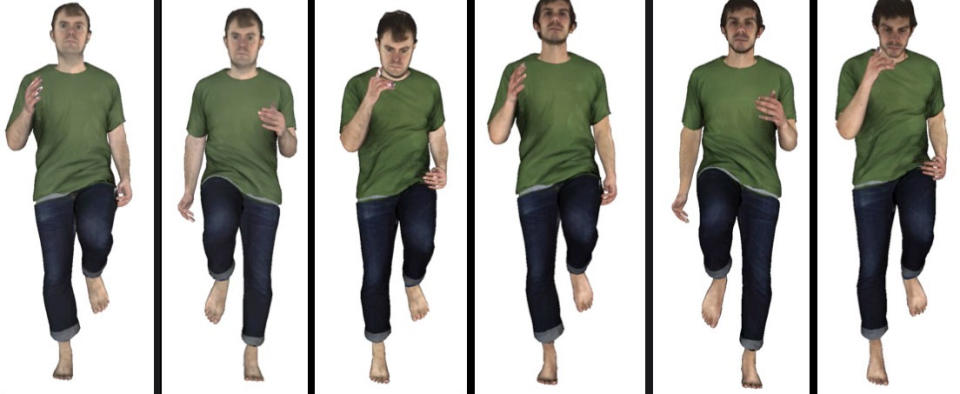This virtual try-on system for clothing might actually work
It uses a 4D camera system to scan the way clothing moves on a body.
It can be a real pain to shop for clothes online when it's unclear how they'll fit. Sure, if you have favorite brands, it's easier, but if you're wading into the unknown territory of a completely new-to-you store or line of clothing, you're taking a big gamble. And since none of us actually want to step foot in a store these days (ew), it can be a real headache to find clothes that fit. That's why this new breakthrough is so interesting. Researchers at the Max Planck Institute for Intelligent Systems have discovered how to digitally capture clothing on a moving person and dress a different 3D virtual person in it. It's functionally being able to virtually try on clothes and see how they'll fit as you move around.
Right now, virtually trying on clothing is pretty useless, as anyone who's actually used such features can attest to. That's because it relies on a 2D clothing pattern from a manufacturer and then has to simulate how it might fit on your body. This tech works differently because it doesn't have to simulate how clothes fit on you. "Our approach is to scan a person wearing the garment, separate the clothing from the person, and then rendering it on top of a new person," says Dr. Gerard Pons-Moll, the project's principal investigator. "This process captures all the detail present in real clothing, including how it moves, which is hard to replicate with simulation."
The product, called ClothCap, uses 4D movies recorded using a scanner with 66 cameras and projectors to take full stock of the person being scanned. This allows the scanner to fully see how clothing drapes on a person's body and where it wrinkles. It also records how a body moves under the clothes and how the garment shifts accordingly. Once this data is analyzed, it's easy to separate the piece of clothing from the original body and use it in virtual try-ons. You can find the full paper on how the tech works in the journal ACM Transactions on Graphics.
It will probably be awhile before we see this technology on our favorite store websites; after all, it requires scanning models in many different poses, and that complicated camera system can't be cheap. Still, as retailers move from brick-and-mortar stores to selling clothing online exclusively, this would be a great way to help customers decide what exactly to buy.



